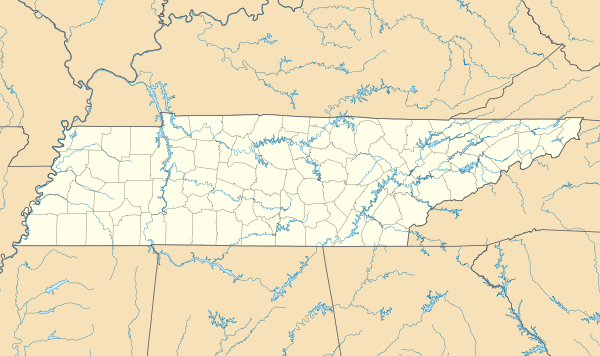Doctor's Building (Nashville, Tennessee)
|
Doctor's Building | |
|
| |
  | |
| Location | 706 Church St., Nashville, Tennessee |
|---|---|
| Coordinates | 36°9′44″N 86°46′59″W / 36.16222°N 86.78306°WCoordinates: 36°9′44″N 86°46′59″W / 36.16222°N 86.78306°W |
| Area | 0.4 acres (0.16 ha) |
| Built | 1910, 1921 |
| Architect | Dougherty and Gardner |
| Architectural style | Renaissance |
| NRHP Reference # | 85001607[1] |
| Added to NRHP | July 25, 1985 |
The Doctor's Building[2] is a six-story commercial building in Nashville, Tennessee that was constructed in 1916 (some sources say 1910)[3][4] and is listed on the National Register of Historic Places.[1]
The building site was the former location of the home of railroad magnate Colonel E.W. Cole,[5] with his home being the last 19th-century mansion on Church Street. A new building, known as "The Doctor's Building" was then constructed as a three-story building, with medical offices on the upper floors, and retail shops on the ground floor. A few years later (in either 1916 or 1921), it had three more stories added, increasing its size to 100,000 square feet (9,300 m2).[6] The design, by architect Edward E. Dougherty of the architectural firm "Dougherty and Gardner" was of the elaborate Beaux-Arts or Renaissance Revival style. The exterior is sheathed with glazed polychrome terra cotta.[6][7]
In the 1940s and 1950s, the building consisted of office space for many of the city's doctors and dentists.[8]
References
- 1 2 National Park Service (2010-07-09). "National Register Information System". National Register of Historic Places. National Park Service.
- ↑ Note: The name of the building is variously spelled as "Doctor's Building" "Doctors' Building" and "Doctors Building"
- ↑ Rogers, Tom (July 19, 1981). "You can see city grow, strolling downtown". The Tennesseean. pp. F–1, F–2.
- ↑ Beasley, Kay (December 21, 1986). "Old building getting new sparkle". Nashville Banner.
- ↑ "Home of Colonel E.W. Cole". The News. August 26, 1999.
- 1 2 "Downtown Tour of Nashville's Historic Structures". The Tennessean. Retrieved December 8, 2013.
- ↑ Christine M. Kreyling, Wesley Paine, Charles W. Warterfield, Susan Ford Wiltshire, Classical Nashville: Athens of the South, Nashville, Tennessee: Vanderbilt University Press, 1996, p. 60
- ↑ Ward, Getahn (October 19, 1998). "A glimpse into the future shows Church Street's past". Tennessean. p. 26.